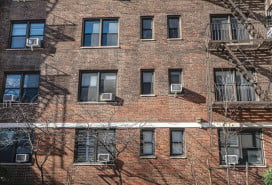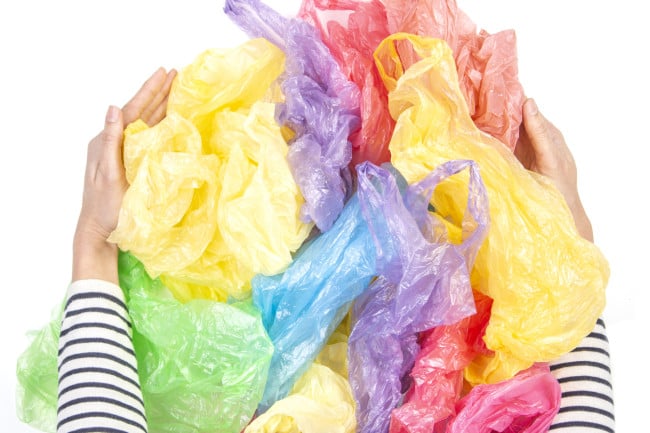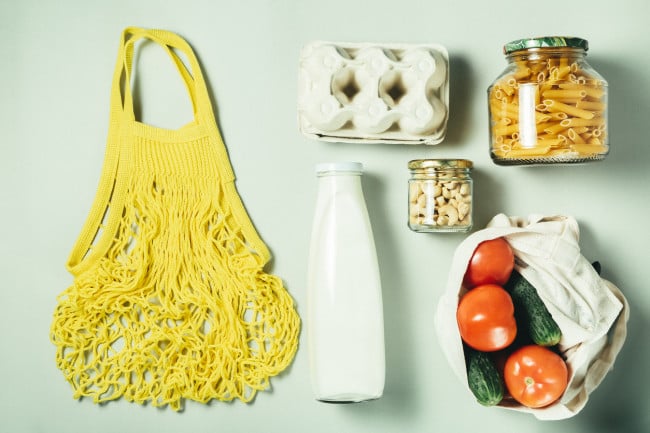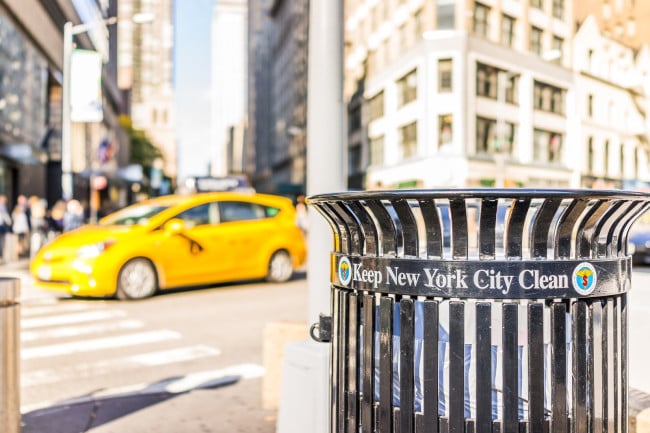Recycling is key, but reducing plastic use is a better goal. Here are some tips
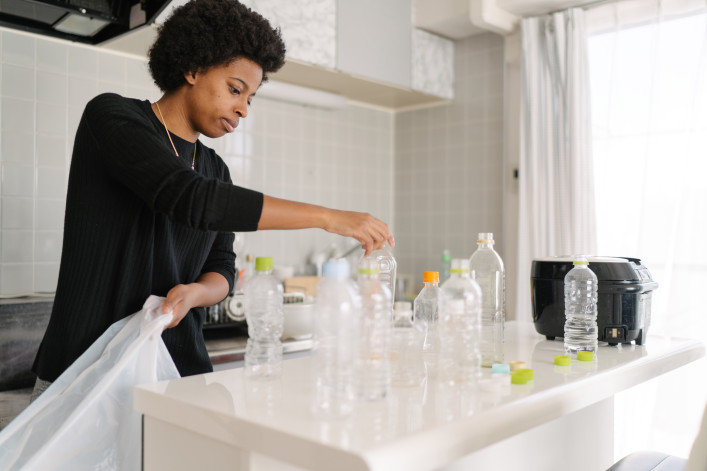
Recycling is necessary—but reducing your use of plastic has a bigger impact on the environment.
iStock
Ever since I moved into my Queens apartment three years ago, there has been an ongoing and dirty saga: My neighbors don’t get how to recycle—or throw out trash for that matter. I’m talking rotisserie chicken clamshells in the plastics recycling bin (including the carcass), diapers in the paper recycling bin, and containers that haven’t been rinsed out. It’s pretty gross.
I’ve tried to help by creating signs explaining how to recycle (twice). There have been conversations with the super, letters posted by the management company (with threats to close the trash chutes), and posters from the Department of Sanitation on how to recycle. But just this weekend, there were vegetable peels in the recycling bin.
It turns out that it’s not just my neighbors who don’t know how to recycle—lots of New Yorkers struggle with this. That doesn't leave you off the hook: All New Yorkers are required to abide by recycling rules, says Belinda Mager, director of communications for the NYC Department of Sanitation. DSNY provides educational materials on recycling for both building managers and residents. Training is available for building management (on hold now because of Covid).
If a building is not following recycling rules, for example, recycling is being mixed with garbage, you can call 311, Mager says. There’s also an online portal where you file a complaint.
Recycling is important—but taking steps to avoid the use of plastic has an even broader impact. Producing plastic creates toxic emissions and some plastics aren’t recyclable at all. Reducing your plastic use cuts down on waste and helps the environment—it’s really a no-brainer.
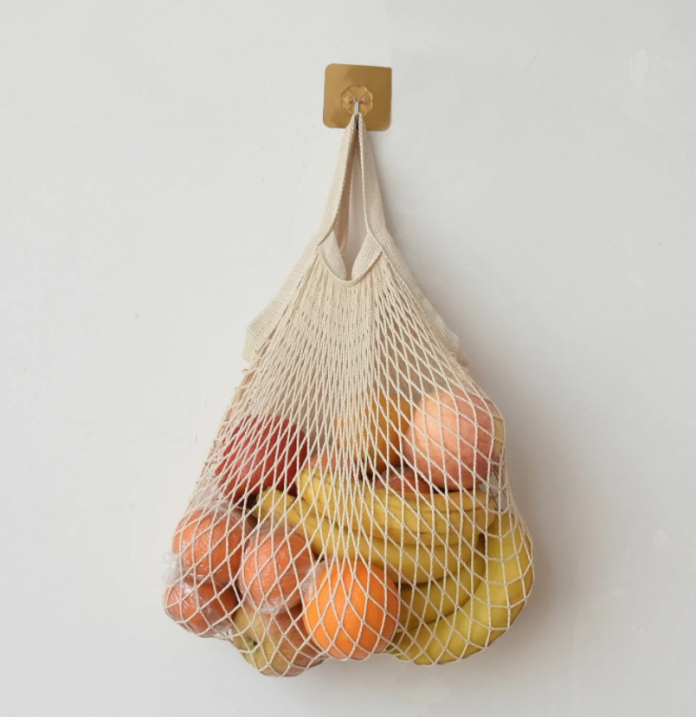
How to cut plastic out of your life
Cheryl Paswater, chief fermentationist and CEO of Contraband Ferments, taught a recent Brooklyn Brainery class on living plastic-free. She says there are many things in your apartment you might not realize contain plastic.
“It’s impossible to completely eliminate plastic but you should make conscious choices as much as possible,” Paswater says. The easiest and perhaps most important place to start is the kitchen. “Our food sits in plastics, and it leaches into our food,” she says. Swap out plastic containers for glass or stainless steel containers, or jars that are freezer-safe.
Another place to cut down on plastic is the grocery store. Plastic bags are mostly banned—you can take it a step further by bringing some reusable mesh bags along with your tote bags for produce. Another solution: buy in bulk at stores that let you put food directly into containers.
Single-use plastic utensils, cups, and plates, as well as flexible plastics, aren’t currently recyclable in NYC, so you should reduce your use of these as much as possible.
If you’re ordering takeout, Paswater says to ask the restaurant what kind of packaging they use and tell them you don't need extra utensils, for example. She often brings her own glass containers to restaurants for takeout.
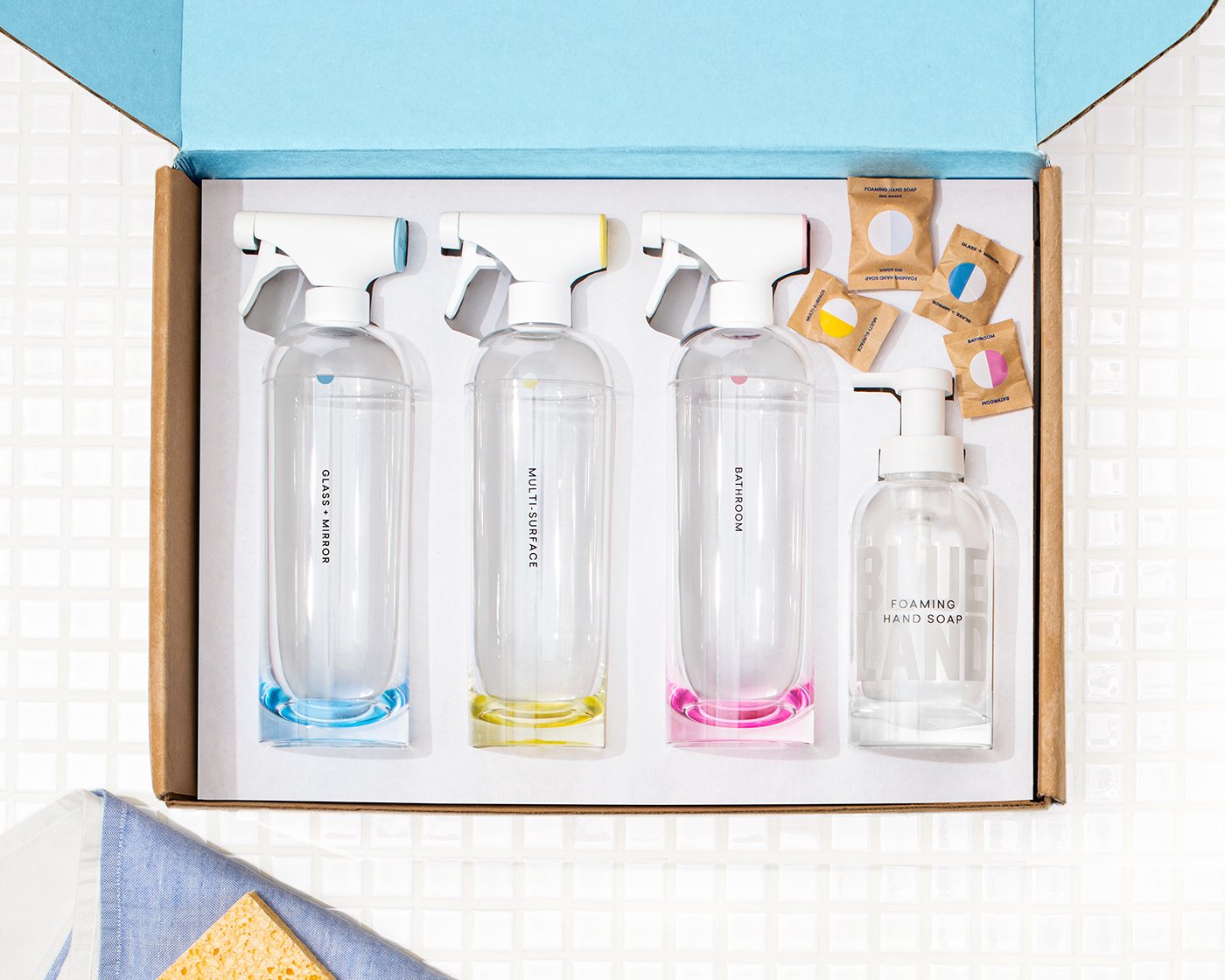
Plastic-free cleaning products
One way to cut down on plastic is to buy products with little or no plastic packaging. Some of the biggest culprits are cleaning supplies—like giant, plastic jugs of laundry detergent or bleach.
With subscription services such as Grove, BlueLand, and CleanCult, you get a reusable glass spray bottles and tablets that can mix with water to create cleaning solutions. The costs are relatively low, for example, tablets from BlueLand cost $2 when you refill the bottles. Another bonus: No more lugging home heavy jugs from the supermarket.
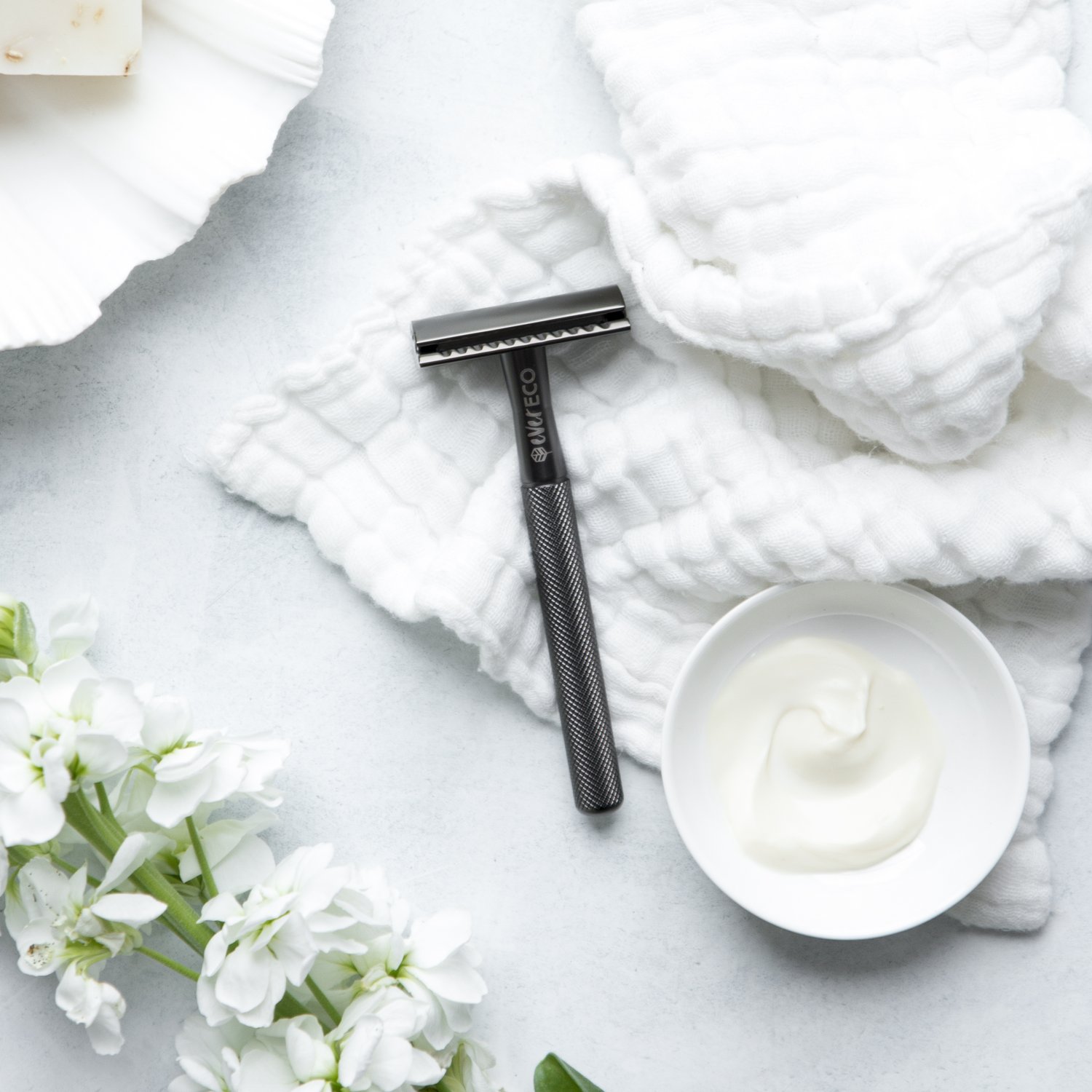
Personal care products also use lots of plastics—think shampoo, mouthwash, and toothpaste—you get the picture. Enter companies like Native that offer plastic-free deodorants in paper tubes. You can find package-free "bites" of toothpaste, and soap-like bars that lather up to make shampoo.
If you’re a parent, when it comes to diapers, Paswater suggests using cloth ones. Of course, going the cloth diaper route is a lot of work. Many NYC parents use a cloth diaper service—the diapers are laundered and delivered to your door weekly.
And if you use an air filter in your apartment, Paswaster suggests Blueair, because their products are made with minimal plastic.
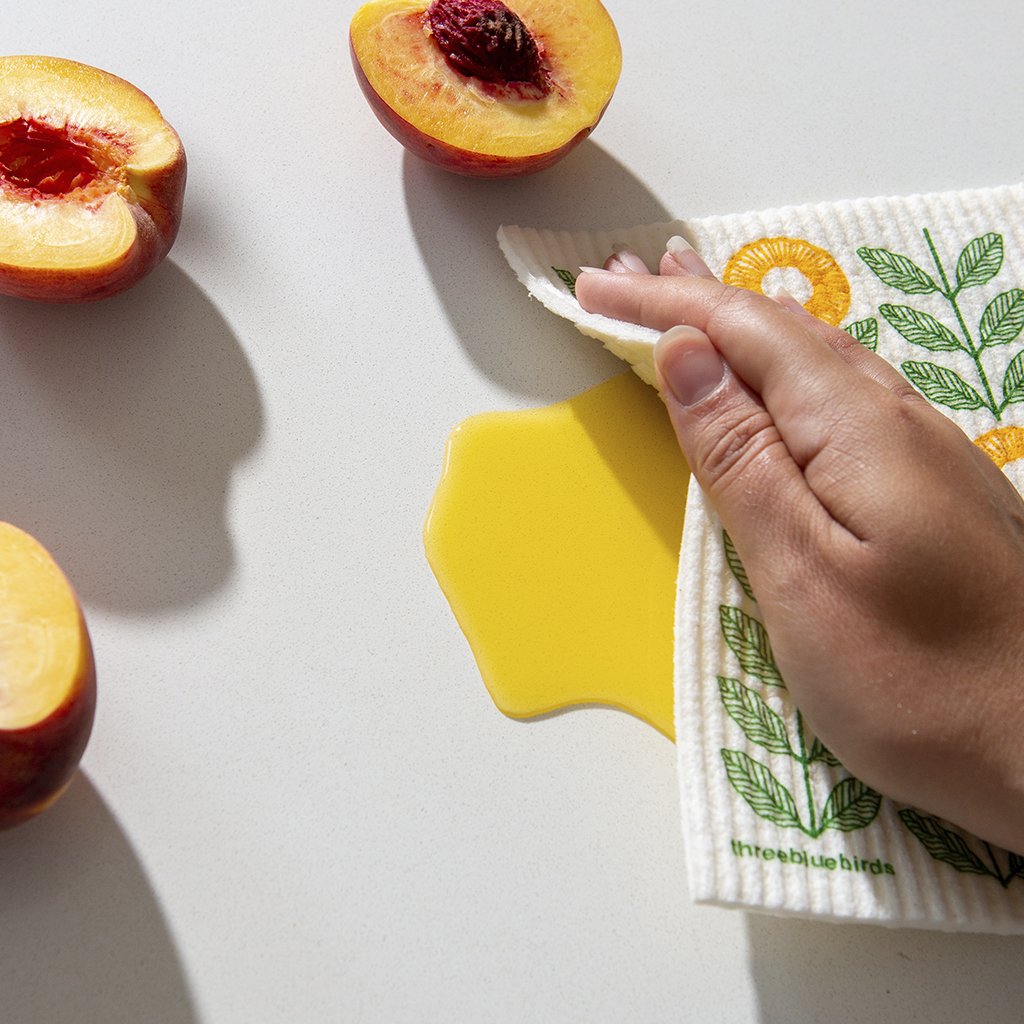
Plastic straws can't be recycled, so you can opt for stainless steel ones from the Package Free Shop (they have a location in Brooklyn and an online store). Plastic bags and single-use plastic wrap are also an easy swap, you can try Bee’s Wrap to hold your leftovers instead. The brand If You Care uses unbleached recycled cardboard for its packaging, and has reusable paper towels made from from cellulose and Non-GMO cotton.
And you can do your part for the environment by steering clear of plastic water bottles. Try a reusable bottle, like the ones from Swell. (Incredibly, one million plastic bottles are bought around the world every minute.)
How to recycle in NYC
Just because it’s plastic doesn’t mean it’s recyclable, and just because it’s recyclable, doesn’t mean you all you do is throw it in the bin. All products should be clean and washed out (no Nutella containers with smudges of hazelnut spread). And, if there is no number on the product, it’s likely not recyclable and should be thrown out with garbage. Yes, those numbers mean something.
Mager says that New Yorkers tend to forget to recycle personal care packaging. “Shampoo bottles and the cardboard toilet paper roll are recyclable,” she says.
That goes for most types of paper products. “People may not think to recycle scrap or torn paper, but that’s recyclable too,” Mager says. “For paper, if you can tear it, we can take it.”
It’s also important not to mix in things that aren’t recyclable. Flexible foam and film plastics (like those you might find covering fresh fish) aren’t recyclable. When it comes to glass, unless it’s a bottle or jug, it isn't eligible for NYC’s curbside recycling program. Window panes, glass cooking pots, and chipped china are incompatible, Mager says.
If you’re throwing out old clothes, electronics, or even mattresses, those items aren’t recyclable either. But the city does have programs that help you donate or dispose of these items to reduce waste.
And, in case you don’t know, plastics should be recycled in one bin, and paper should be recycled in a separate bin. Don’t mix them and ruin your neighbors’ recycling efforts. Your building should have separate, labeled bins. It really just takes a little knowledge and effort to reduce your plastic waste, and prevent neighbors (like me) from being frustrated over a messy trash room.
You Might Also Like




